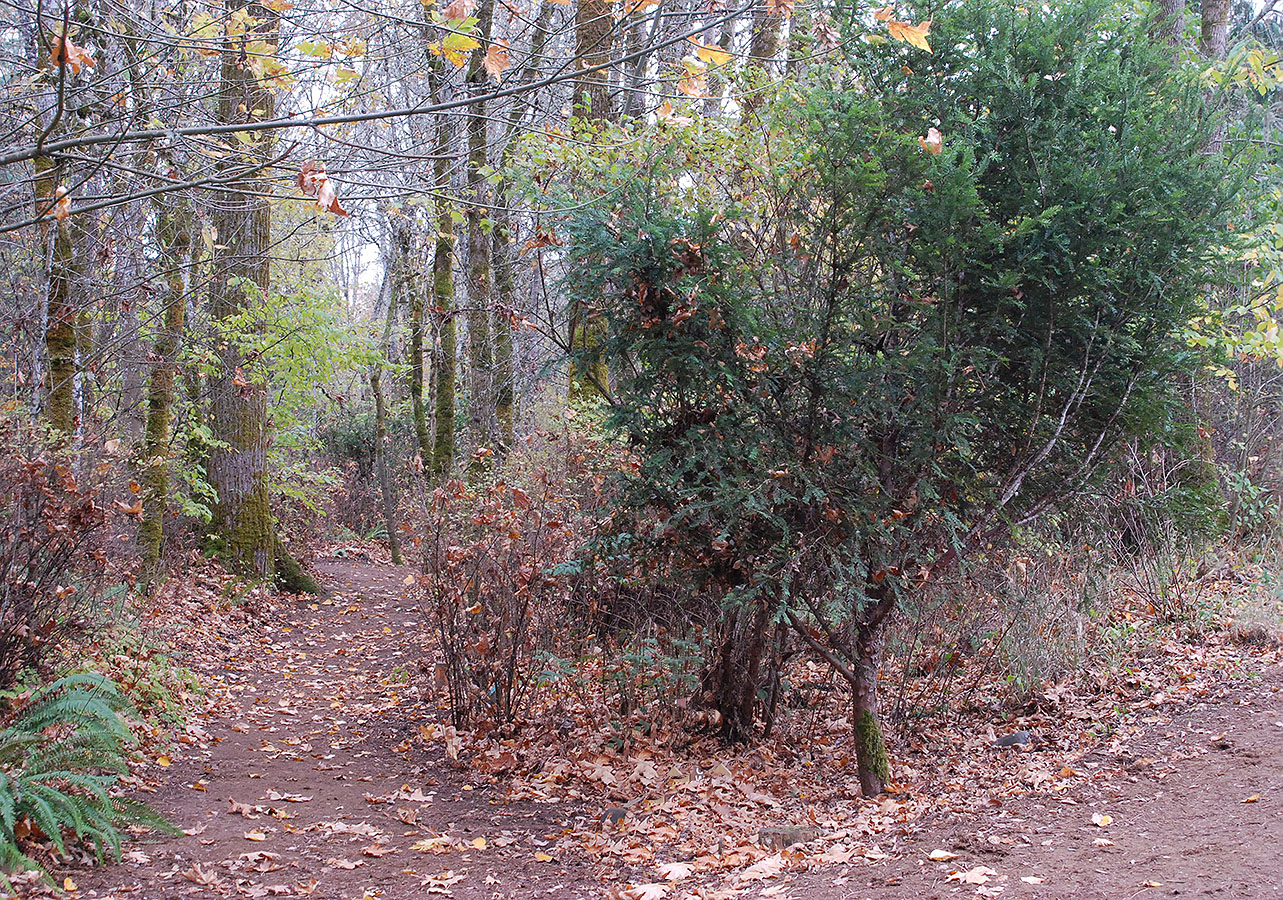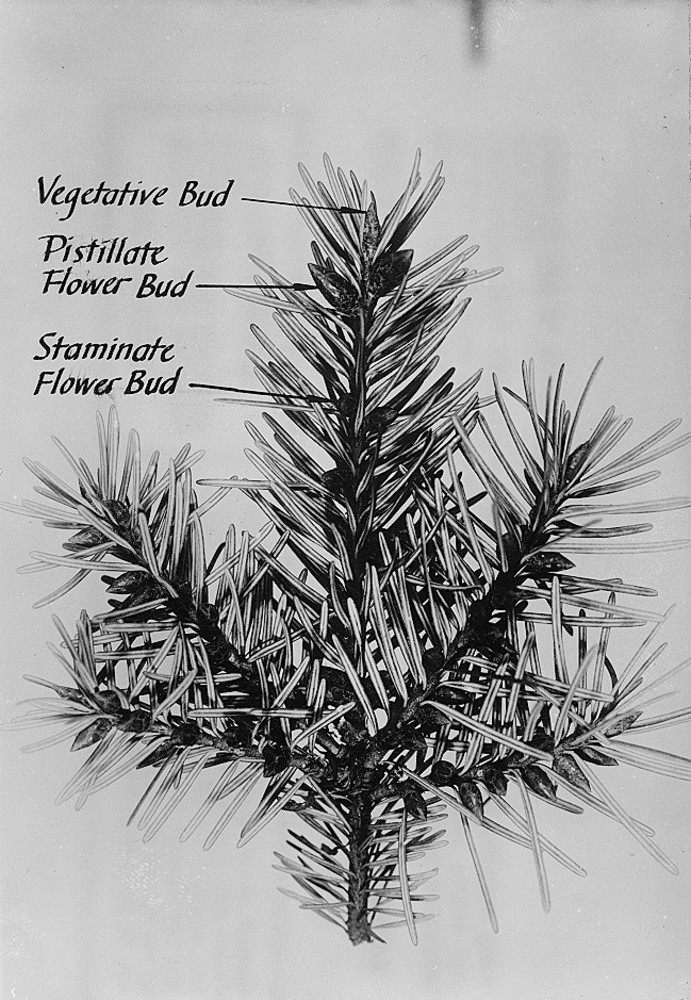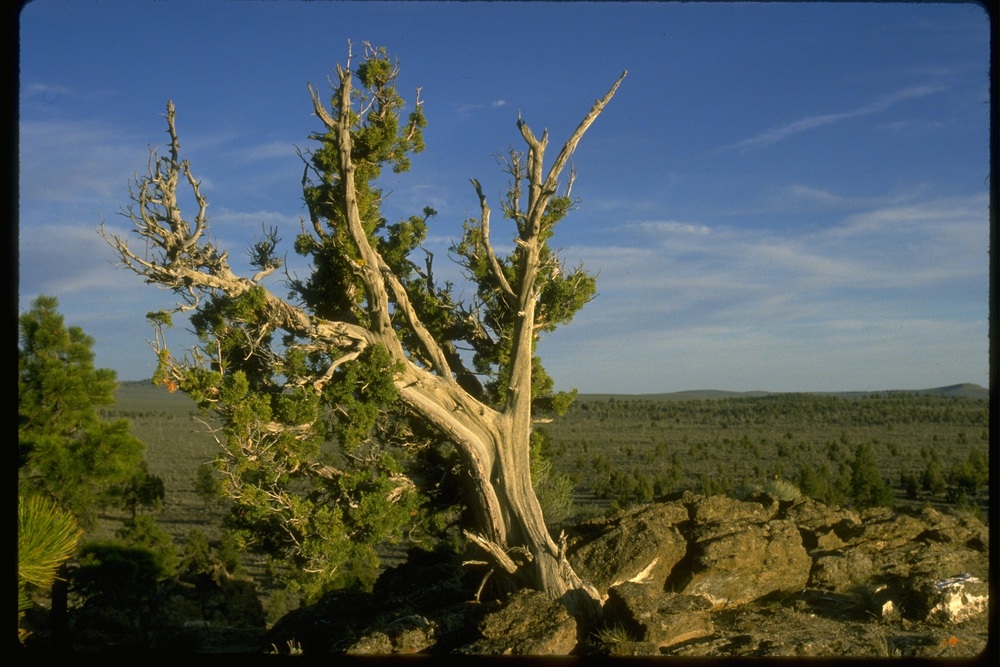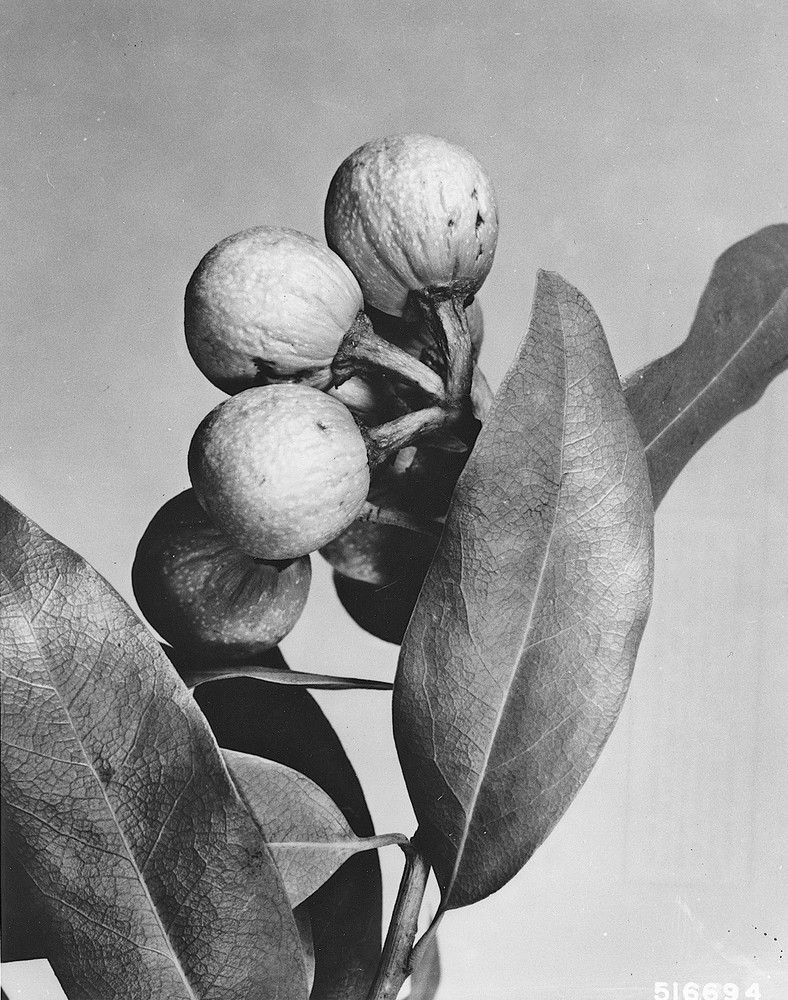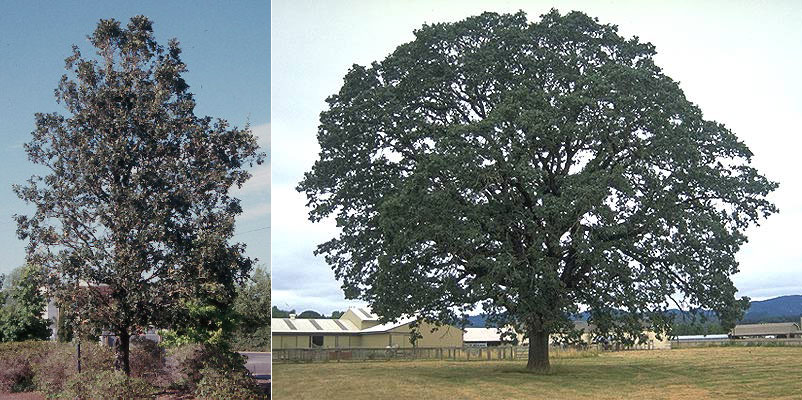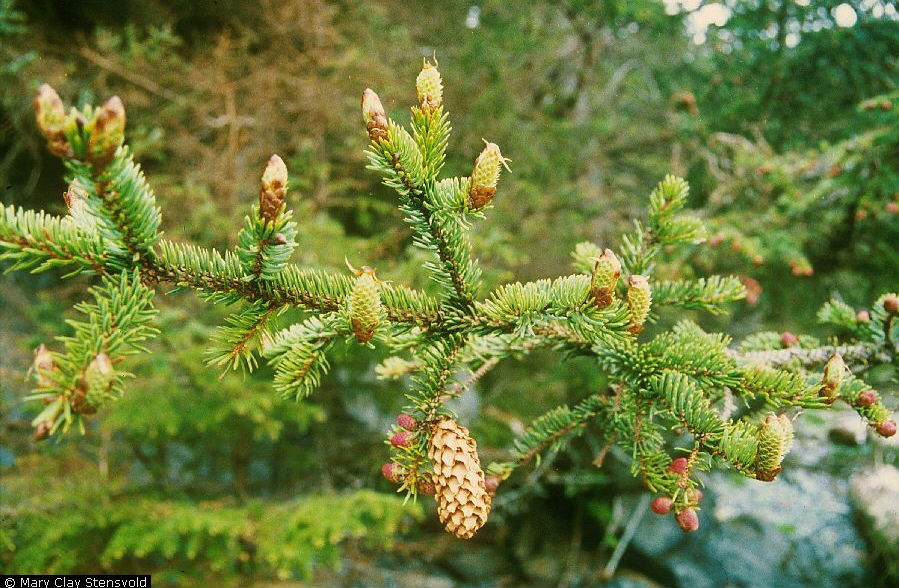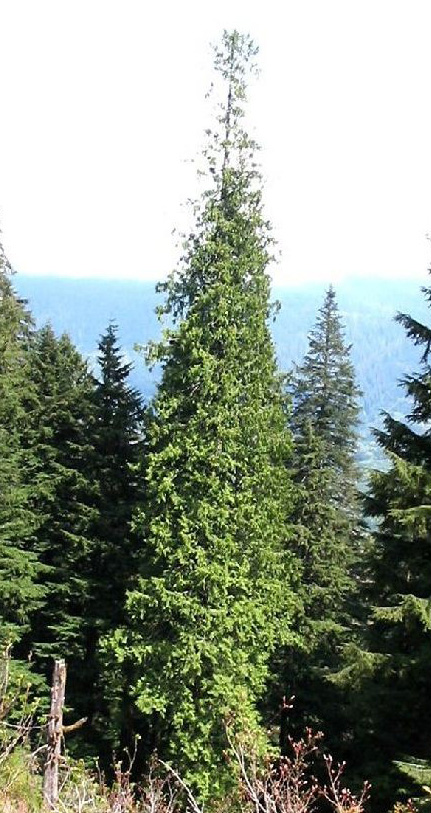The western or Pacific yew, Taxus brevifolia, belongs to the yew family Taxaceae. It is unusual among evergreen trees with needle-like leaves because its single seed is partially enclosed by a fleshy pink structure called an aril. Most Oregon evergreens have seeds borne in brown woody cones (pines) or small gray berry-like cones (junipers). Yew foliage resembles that of the coastal redwood, but its diminutive size and thin distinctive reddish purple color with long paper scales set it apart.
Pacific yew grows as a small understory tree or shrub in coastal and mountainous forests from the Alaskan Panhandle to the San Francisco Bay area and in the Cascades, Sierra Nevada, and northern Rocky Mountains to elevations as high as 5,000 feet. Yews are shade tolerant but cannot tolerate fire. They frequently are found under old-growth canopies, in canyon bottoms, or along streams.
Pacific yew is prized for its fine-textured, hard, heavy, elastic, remarkable heartwood for a number of uses. The wood is an attractive red, easily worked, and resistant to decay. Native people traditionally used the wood to craft a number of implements, including bows, canoe paddles, clubs, spear and harpoon shafts, wedges, spoons, and arrowheads. Various concoctions of twig and bark were used to treat physical ailments, from respiratory and intestinal problems to cancer.
Pacific yew is valued today for many of the same reasons. Larger logs have been made into fence posts and railroad ties, and Asian and Japanese buyers have paid as much as $7,000 for prime logs, which are primarily used for carvings. Such logs are rare because of the shrubby growth habit of the species and the loss of old-growth forests.
In 1969, scientists discovered that yew bark and leaves contain a chemical compound, paclitaxel, that can be used to treat ovarian and breast cancers by hindering mitosis in the tumors. Bristol Meyers Squibb trademarked the more familiar name of the compound, Taxol, which they sell at great profit—a billion dollars, by one estimate—making it a most valuable natural product.
Until pacitaxell was synthesized and other sources found (English yew, Taxus baccata, is a close relative that grows in Europe), Pacific yew was harvested in great quantities primarily from federal land, and many trees were killed in the process of stripping the bark before the Forest Service and Bureau of Land Management implemented a permit and inspection system to control the short-lived "yew-bark boom."
In spite of reports to the contrary, Pacific yew is not poisonous, although its relative, the English yew—known since antiquity as the "tree of death"—is.
-
![]()
Pacific Yew.
Courtesy Oregon State University -
![]()
Pacific Yew.
Courtesy Oregon State University -
![]()
Yew tree located in the Columbia River Gorge.
Oregon Historical Society Research Library, Donald R. Nelson collection, CAP155
-
![Donated prior to 1939, when it was loaned for a time to the Tillamook County Pioneer Museum.]()
Indian bow made of yew from south eastern Oregon.
Donated prior to 1939, when it was loaned for a time to the Tillamook County Pioneer Museum. Oregon Historical Society Museum, 1412
Related Entries
-
![Douglas-fir]()
Douglas-fir
Douglas-fir (Pseudotsuga menziesii), perhaps the most common tree in Or…
-
![Juniper]()
Juniper
Western juniper (Juniperus occidentalis) is emblematic of central and e…
-
![Myrtlewood]()
Myrtlewood
Oregon-myrtle (Umbellularia californica) grows along the Pacific Coast …
-
![Oregon white oak]()
Oregon white oak
Oregon white oak, Quercus garryana, grows along the Pacific Coast from …
-
![Sitka spruce]()
Sitka spruce
Sitka spruce (Picea sitchensis) is also known as the coast or tidewater…
-
![Western red cedar]()
Western red cedar
Western red cedar (Thuja plicata) is one of the grand trees that grows …
-
Whitebark pine
Whitebark pine (Pinus albicaulis) is arguably Oregon's quintessential t…
Map This on the Oregon History WayFinder
The Oregon History Wayfinder is an interactive map that identifies significant places, people, and events in Oregon history.
Further Reading
Arno, S.F. and R.P. Hammerly. Northwest Trees (revised ed.). Seattle, Wash.: Mountaineers Books, 2007.
Jensen, E.C. and C.R. Ross. Trees to Know in Oregon (revised ed.). Corvallis: Oregon State University Extension Service, 2005.
Moerman, D.E. Native American Ethnobotany. Portland, Ore.: Timber Press, 1998.

